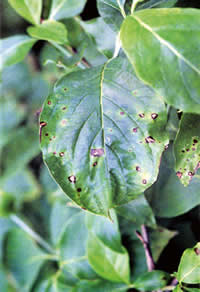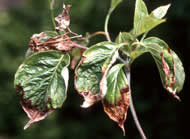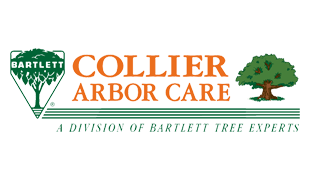|

Leaf blotch symptoms caused by Dogwood Anthracnose Dogwood AnthracnoseDownload a PDF of this articlePlants AffectedDogwood anthracnose can affect all flowering dogwood species. The following list is presented in most susceptible to least susceptible: Pacific dogwood (Cornus nuttalii), flowering dogwood (Cornus florida). Kousa dogwood (Cornus kousa) is considered resistant Symptoms/DamageLeavesThe most common symptoms are large, brown, irregular shaped blotches with dark brown to purple margins on the leaves. Infection often takes place at the tip, spreading down the midvein, producing a wedge shaped appearance. Infected leaves commonly drop before fall, sometimes defoliating the tree. TwigsInfected twigs have sunken spots that are tan to brown with purple borders. The spots will eventually enlarge and girdle the twig, resulting in twig dieback. Life CycleThe disease overwinters on dead twigs on the tree, and leaves and twigs on the ground. The diseased leaves discharge thousands of spores into the air that cause infection. Infection occurs in spring on succulent new leaves and stems during wet, mild weather. ManagementCulturalPlant disease resistant Kousa dogwoods. Prune and destroy all infected twigs, rake and destroy fallen leaves throughout the year. Thin the tree canopy for better air circulation. OrganicCopper can be applied as an effective fungicide following the same directions for chemical treatment below. ChemicalThree to four applications of an approved fungicide starting at bud break until dry weather. Dormant treatments in the fall will help reduce overwintering spores. |

Pink Dogwood leaf displaying early symptoms of Anthracnose |
|
Home |
Services |
The Arbor Advisor |
Garden Calendar |
About Us |
Fact Sheets |
Contact Us |
Site Map Collier Arbor Care Portland 503-722-7267 Vancouver (360) 693-6056 Site contents and design ©2013 Collier Arbor Care |





